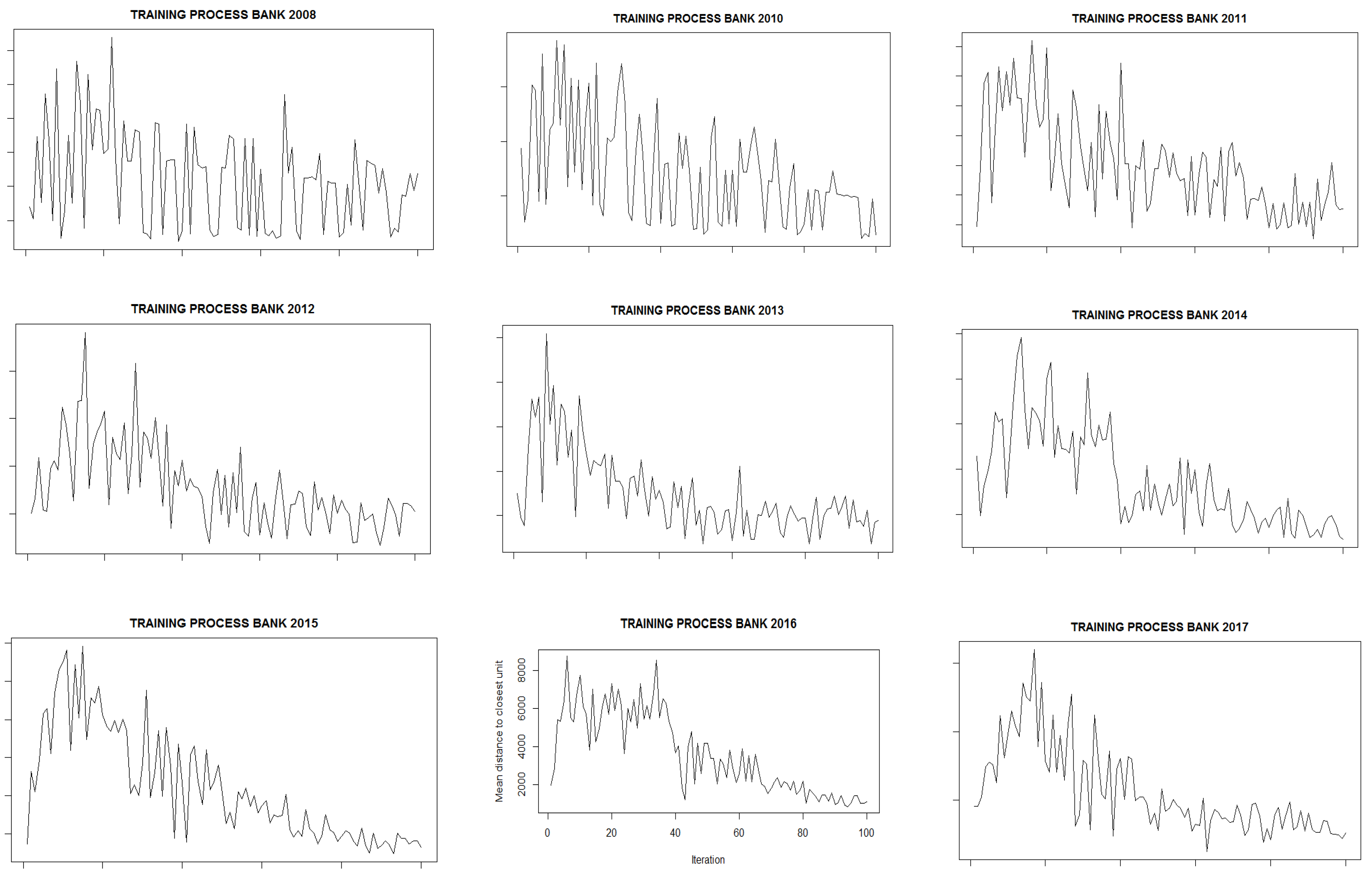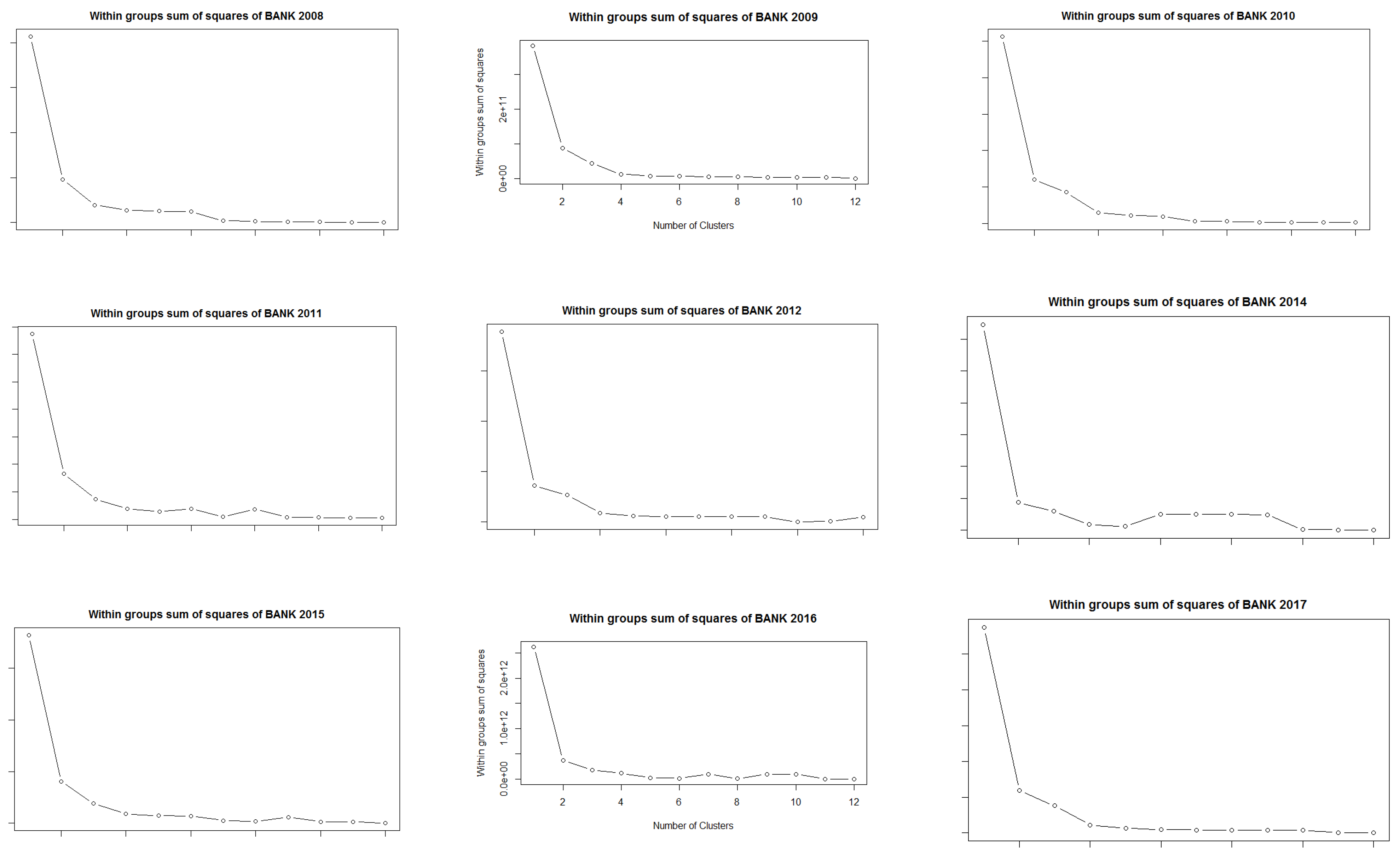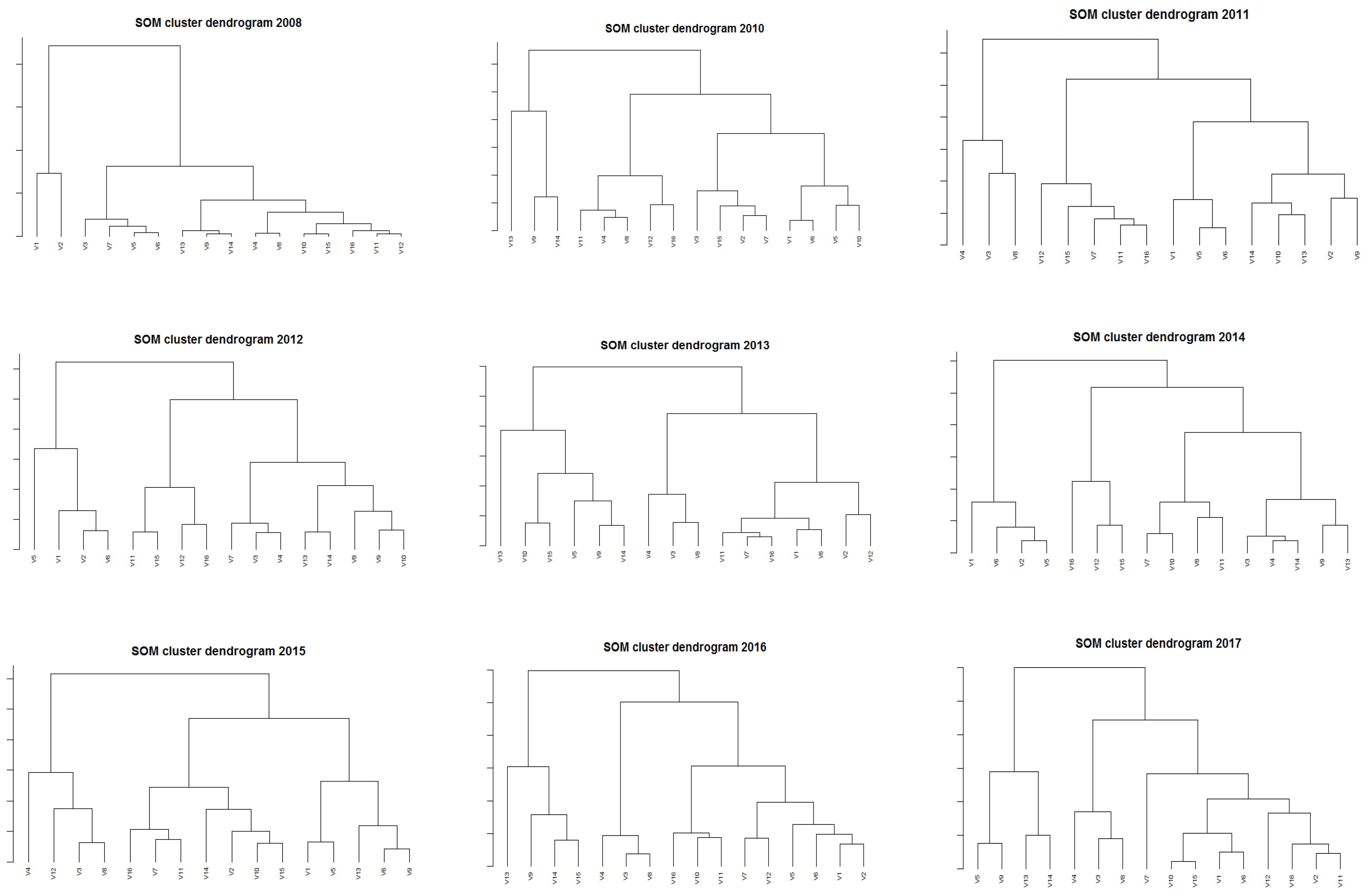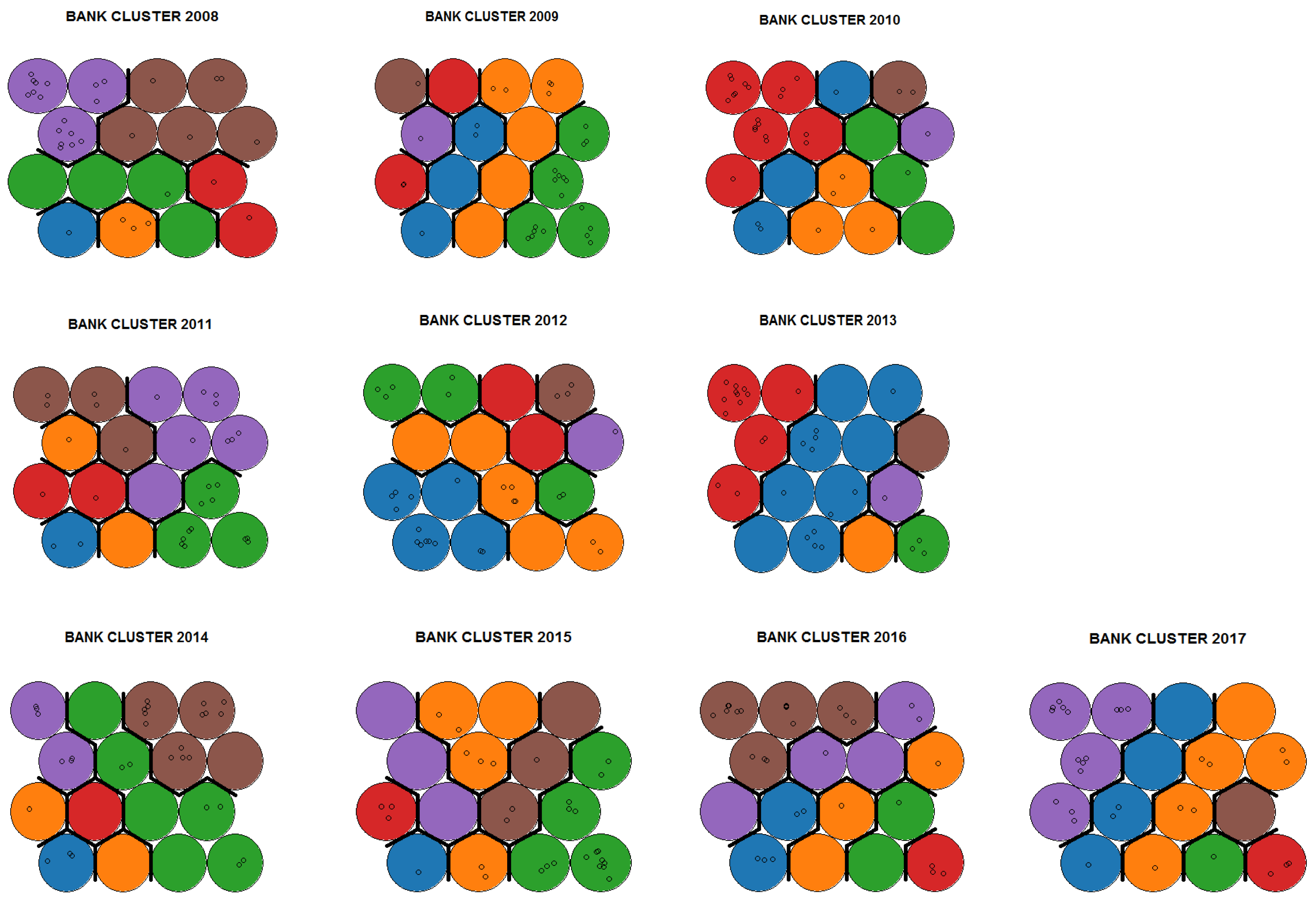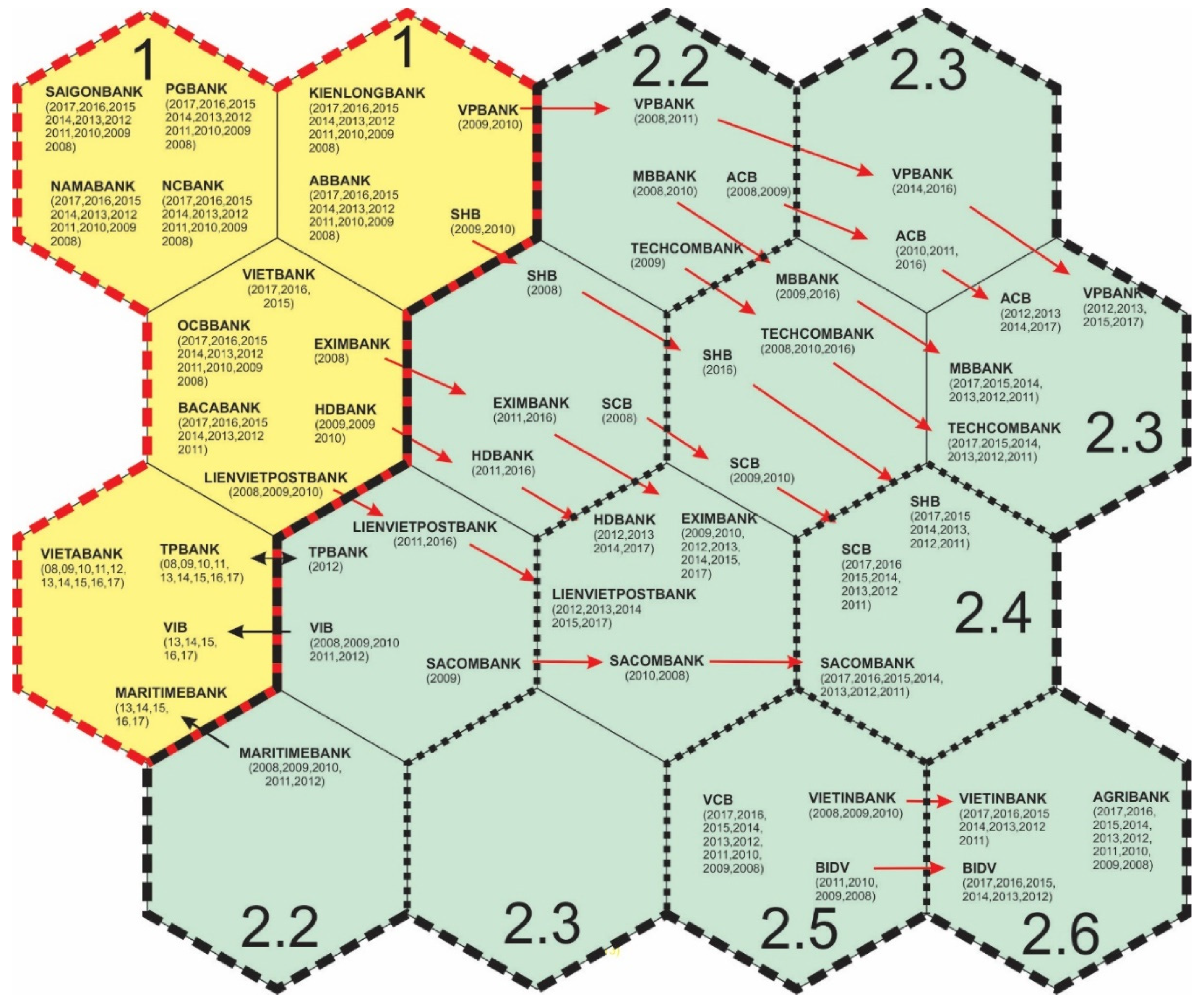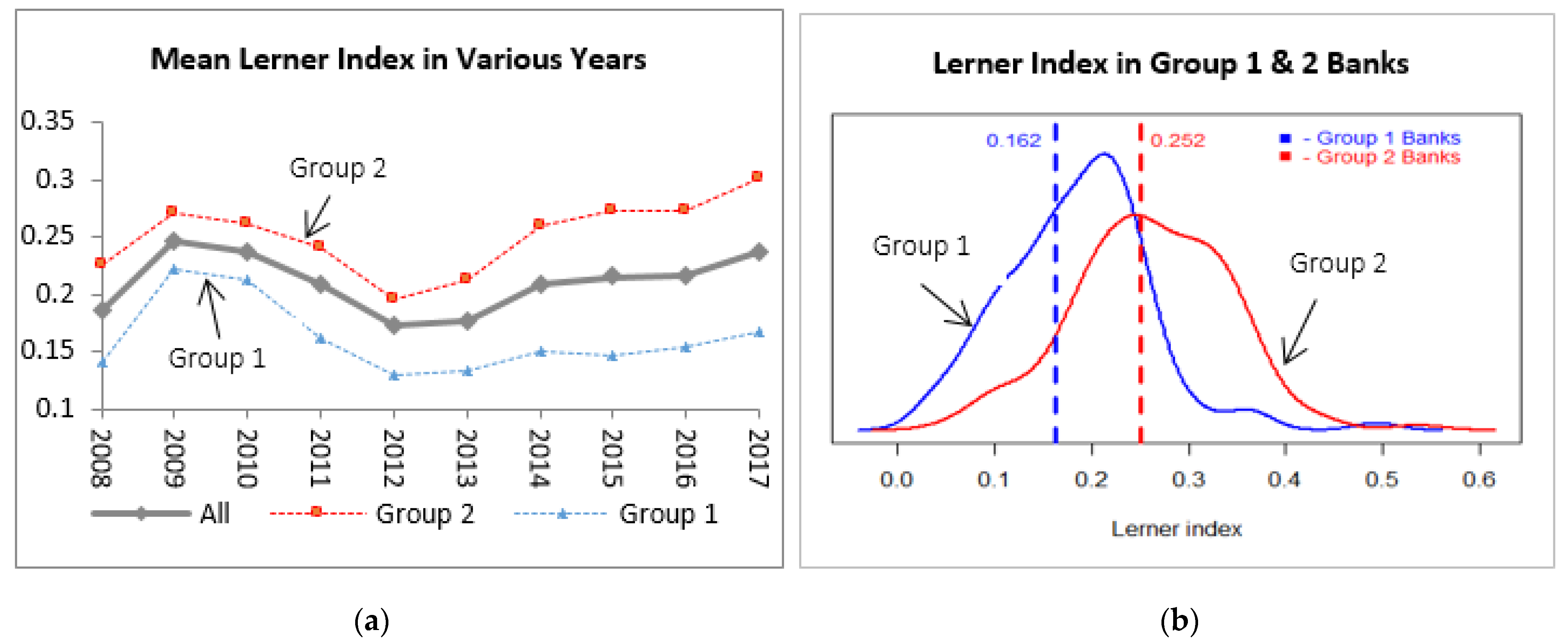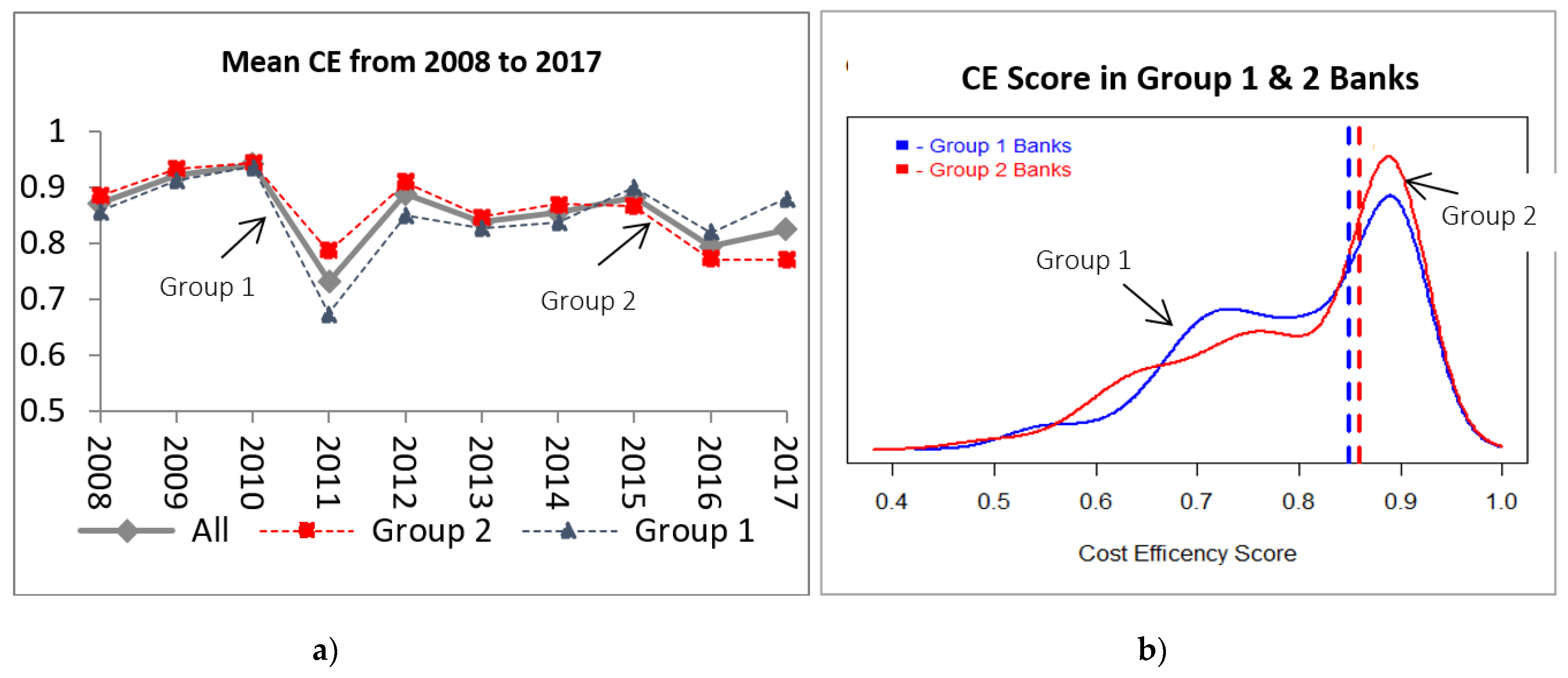1. Introduction
After the 2008 global financial crisis (GFC), Vietnam banks faced unprecedented challenges, including economic recession, credit growth rate stagnation and extraordinary levels of non-performing loans (
KPMG 2013). On the 1st of March 2012, the Vietnam government issued the “Restructuring Financial Institutions 2011–2015” programme as a response to these financial challenges (Decision no.254/QD-TTg). The restructuring programme was designed to bring the Vietnam banking system into line with international standards (
Le 2014;
Nguyen et al. 2014,
2016a). The main features of the restructuring programme were: (i.) permit foreign ownership of local banks with a maximum of 20% share; (ii.) support all local banks to register shares on the Vietnam stock exchange; (iii.) require all commercial banks to have at least 3000 billion VND in bank capital and capital adequacy requirements (minimum 9% in 2010); and (iv.) encourage merger and acquisition (M&A) activity to improve the competitiveness and performance of the Vietnam banking industry (
Hoang et al. 2016).
Restructuring, achieved largely through M&A, has had a significant impact on the competitive environment and performance of the Vietnam banking industry in several ways. First, as scholars note, M&As reduce the total number of banks and thus increase market concentration (
Fernández de Guevara et al. 2005). This increase in bank concentration has drawn the attention of researchers, who have begun to measure Vietnam banking competitiveness using the Lerner index (
Nguyen 2018;
Nguyen et al. 2016b). These studies indicate that Lerner indexes range from 0.158 to 0.21 over the period of 1995 to 2016. Second, M&As impact on bank performance. As
Angelini and Cetorelli (
2003) note, when banks are faced with increased market competitiveness, they may consolidate, merge or acquire other banks to improve their performance. Scholars have examined Vietnam bank cost-efficiency using a range of methods, including data envelopment analysis (DEA), stochastic frontier analysis (SFA) and Bayesian regression of an SFA (
Nguyen and Nghiem 2018;
Nguyen et al. 2016a,
2016b;
Vu and Turnell 2010). Studies have found that the cost-efficient scores for Vietnam banks range from 0.61 to 0.93. These studies cover different periods, from 1995 to 2014 (
Gardener et al. 2011;
Nguyen and Nghiem 2018;
Nguyen et al. 2016a,
2016b).
Third, as
Hoang et al. (
2016) have argued, as the number of banks decreases in the post M&A era, the possibility of a monopoly occurring increases. This is of concern because monopolies may damage the competitive atmosphere of the banking industry (
Hoang et al. 2016). In a monopolistic situation, some banks face much lower levels of competition, while others face much higher levels of competition. This situation occurs because larger banks control the market through offering better interest rates and loan terms; in contrast, smaller banks cannot offer the same deals and consequently find it harder to attract and retain customers. The larger bank group has greater market power and can charge higher loan prices; hence they have higher levels of profit (
Nguyen 2018). In short, large banks have the potential to become monopolists.
There are limited studies to examine the existence of monopolists in the Vietnam banking industry.
Nguyen and Nghiem’s (
2018) study is the only study that tests differences in bank market power between Vietnam’s state-owned and joint stock domestic banks using the Lerner index. The authors’ results reveal no significant difference in bank market power between state-owned or joint stock banks. Their results indicate that neither state-owned nor privately-owned banks are strong enough to become monopolists. In a competition condition, larger banks have an advantage over smaller banks. In fact, they often acquire smaller banks to maintain their dominant position in the market (
Tabak et al. 2012;
Wang 2015). In the Vietnam banking industry, there were 18 M&A deals from 1997 to 2015. Four of the eighteen M&A transactions involved state-owned banks merging with joint stock banks (
Hoang et al. 2016). These mergers and acquisitions indicate that a high market power bank group may exist. This group of banks includes state-owned banks and joint stock banks. However, no study has examined whether a high market power bank group exists in the Vietnam banking industry. In terms of performance,
Nguyen and Nghiem (
2018) and
Vu and Turnell (
2010) tested the difference in bank performance between state-owned or joint stock banks. The authors’ results show no significant differences in these bank groups’ cost-efficiency (state-owned or joint stock banks). Therefore, it is necessary to use a different approach to classify banks and test different bank market power and performance.
Prior studies used different methodologies to classify companies. For examples,
Du Jardin and Séverin (
2011,
2012) and
Chen (
2012) both used the self-organisation map (SOM) technique, a type of artificial neural network (ANN), to chart trajectories that reflect dynamic changes in a company’s finance.
Chen (
2012) noted that the SOM technique can be used to categorise companies into super-classes: healthy companies and bankrupt companies.
Kohonen (
1982) developed the SOM technique. The technique is comprised of a set of units (nodes) that represent a set of neurons (
Samarasinghe 2006). The neurons are interconnected with neighbours by weights that expose the strength of the connection. A SOM’s primary purpose is to group similar observations into clusters (
Samarasinghe 2006). After training, the input data separate into clusters: those with the highest similarity and highest dissimilarity (
Tsai and Chen 2010).
This study used the SOM technique to categorise Vietnam banks into super-class groups. Applying the SOM technique is more suitable to categorise banks into groups because the SOM technique is different from other methods, as it does not distinguish between state-owned and joint stock commercial banks. This study also examined the dynamic financial status of Vietnam’s banks using the SOM trajectory technique. Tracking bank financial trajectories is crucial because it enables experts to assess companies’ current financial conditions and observe financial developments over time (
Chen et al. 2013).
This study adds to the literature in several way. First, most previous studies on bank market power and performance differentiate between state-owned and joint stock commercial Vietnam banks (
Nguyen and Nghiem 2018;
Vu and Turnell 2010). However, this research does not show any significant differences in bank market power and performance between state-owned and joint stock commercial banks. This study used the SOM technique to categorise Vietnam banks into super-class groups. This is the first study to use a categorising methodology to examine differences in bank market power and performance in the Vietnam banking industry. In addition, this is the first study to build financial trajectories of the Vietnam banking industry.
Second, no study has tested differences in bank market power and performance of various Vietnam bank groups (super-class bank groups) using the SOM trajectory technique. This study fills this knowledge gap by comparing the market power (using the Lerner index) and performance (using the cost-efficiency score) of the super-class bank groups in Vietnam.
5. Conclusions and Policy Implications
This study used the SOM technique to categorise Vietnam domestic banks into two super-class groups (one and two). While differences in the Lerner scores (which represent market power) between the two super-class bank groups (one and two) were statistically significant at the 1% level, the CE scores (which represent performance) were the same. The different market power between group one and two banks contradict
Nguyen and Nghiem’s (
2018) results. This study shows that the SOM technique (with an unsupervised algorithm) can better capture differences in bank market power and thus can be used to divide Vietnam domestic banks into two groups, consisting of weak banks (group one) and strong banks (group two). Using the SOM technique provides academics with a new approach, which is based on an unsupervised algorithm. This is different from previous studies, which have divided domestic Vietnam banks into commercial state and joint stock banks (
Nguyen and Nghiem 2018;
Vu and Turnell 2010). Hence, this study has argued that two groups of banks with different levels of market power exist side-by-side in the Vietnam banking industry. The group of strong banks tends to be monopolists. The existence of these two groups of banks (weak and strong banks) indicates that the competitive domestic banking environment in Vietnam may be at risk. The reason is that group two banks may be more profitable due to greater market power, whereas group one banks may struggle to cut costs to remain viable.
Group two banks (the larger banks) occupy the dominant position in this environment and will continue to expand (
Tabak et al. 2012;
Wang 2015). In such an environment, group two banks may end up acquiring group one banks. This explains why the number of banks reduced from 43 to 32 over the study period of 2008 to 2017. Policymakers and regulators must take this phenomenon (group two banks acquiring group one banks) into consideration when issuing policies in order to maintain an optimal number of banks to ensure the stability and competitiveness of the Vietnam banking system. As
Le (
2014) notes, the ideal number of banks to achieve stability in the Vietnam banking system is between 15 and 17. In 2017, there were 32 banks. To meet the ideal number, half would need to be merged.
Our SOM results showed that 70% of Vietnam banks (19 of 27 banks) maintained their positions, either in super-class group one or two banks. This result indicates that banks tend to maintain their financial position in the industry, and that bank market power persists over time. This fact indicates the existence of some rigidity in the banking industry, which may make it difficult for weak banks to compete. Future research could consider whether bank market power persists over a long period of time. These findings will help policymakers and regulators avoid rigidity and ensure an efficient and competitive banking environment.
